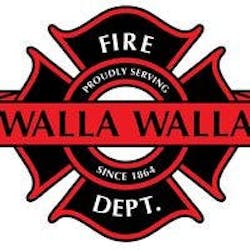Walla Walla, WA, City Increases Ambulance Rate to Fund New EMTs, Medics
Nov. 24—With the exception of the two grant-funded community paramedics hired in 2021 and 2022, it has been 28 years since the Walla Walla Fire Department has added a paramedic or EMT position.
The department's staffing for emergency medical response has not changed since its last position was added in 1996, though calls for fire and ambulance have increased in that time by 55%.
"Quite frankly, the calls for service are outpacing our capacity," Fire Chief John Knowles told the City Council at a study session earlier this year. "This is work we cannot turn away or plan for."
In April, Knowles made the case for six new paramedics or EMTs for the department to help respond to the city's rising number of calls and ease workload-related stress and fatigue in the department.
"More hands doing the work (makes it) easier on everybody," he said.
He recommended the city apply for a Staffing for Adequate Fire and Emergency Response, or SAFER, grant to finance the positions for three years, reapply after that term and take a look at long-term financing options as the city grows.
The city applied and was notified in September that it did not get the grant from the Federal Emergency Management Agency.
In budgeting for the next biennium, the city considered ambulance utility rates as a source of additional revenue. The Walla Walla City Council ultimately approved an increase to the monthly ambulance utility fee to fund up to three new full-time positions.
In 2025, Walla Walla residents will pay an additional $3 per month, or $36 each year, to fund the hiring of three additional paramedics or EMTs to staff the city's ambulances. The total for the year will come to $120.
The change raises the monthly rate for residents from $7 to $10 in 2025, $12 in 2027 and $14 in 2029.
The original proposal, an increase to $9, would have kept the department's budget healthy, but the increase to $10 also provides the WWFD with funding for those needed positions, Finance Director Liz Moeller said at the Wednesday, Nov. 20, meeting.
City Manager Elizabeth Chamberlain said the stepped approach was discussed at a Finance Committee meeting on Monday, Nov. 18. The future increases sustain the health of the fund and the positions, she said.
"I think we've brought forward a kind of incremental increase approach that is continuing to deliver the service that our residents are expecting, plus adding some additional (full-time equivalent workers) that we do need for the long term," she said.
Knowles said at Wednesday's meeting that the funding will help maintain a healthy ambulance fund and take a bite out of his team's workload.
"This is the only way we're going to do it," he told the council. "We don't have any other way to do it."
Moeller said the ambulance utility rate was established in 2022 and was first collected in 2023. Though it was set at a flat monthly rate of $7, the initial financial study showed the rate would need to be $12.65 to sustain the fund.
It was always the city's intention to come back and adjust it, she said.
Several members of the City Council who spoke at Wednesday's meeting commented on the predictability of the increases.
Council member Rick Eskil said the raise feels painful alongside other increases to utility rates and property taxes discussed this year, but he supported it.
"Even though I find it incredibly painful that we've got to go $10, $12, $14, it does make more sense to make sure that we have enough money to continue to keep the firefighters that we hire on the job," Eskil said.
Council member Monte Willis said the incremental approach will allow for better planning and stability for the fire department, "in terms of those funds and how you hire, how you look at retention, how you basically plan for the whole organization."
Council member Steve Moss said the predictability factor is important for the city and for the public, so residents know what the rates will be.
He also said it's important that those who are hired are highly skilled and compensated appropriately.
"We don't want to be somebody else's training ground for them to move on," Moss said.
Knowles said in April that the last staffing study for the WWFD was in 1994, when the department, the only transport service in the Walla Walla Valley, saw 4,897 calls.
The department had 7,064 calls in 2016, before College Place and Walla Walla County District No. 4 established their own transport services. The number of calls to Walla Walla dropped to 6,456 in 2019 after those services started running.
By 2023, the WWFD was up to 7,599 calls for the year.
Knowles said that number would be higher without the community paramedics, who respond to those who would otherwise frequently use emergency services.
___
(c)2024 Walla Walla Union-Bulletin (Walla Walla, Wash.)
Visit Walla Walla Union-Bulletin (Walla Walla, Wash.) at union-bulletin.com
Distributed by Tribune Content Agency, LLC.
